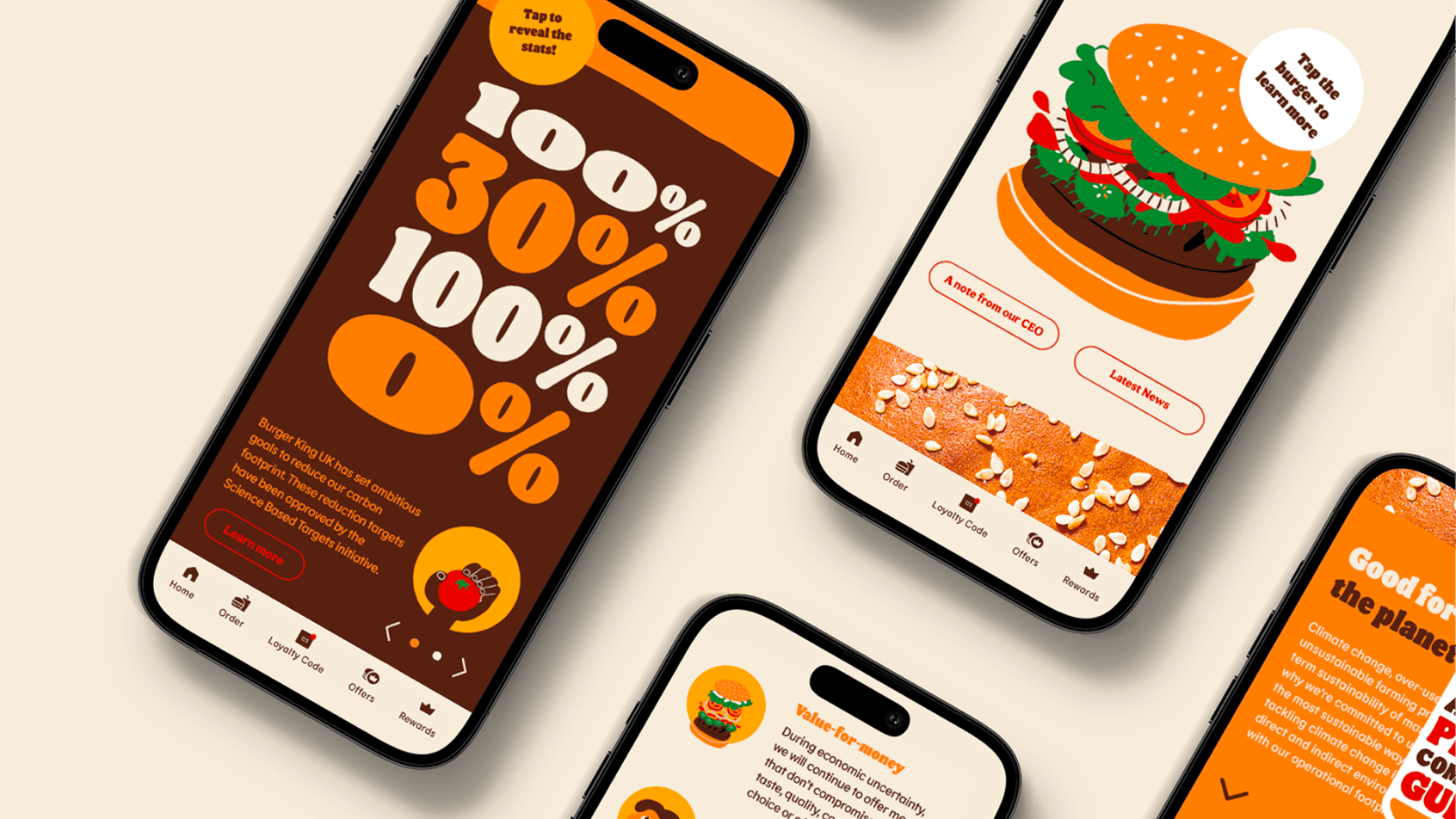Back to Insights
The art of product storytelling in a digital world
Alejandra Romero - 7 July 2023 - 8 min read

The art of product storytelling in a digital world
Reading time: 8 mins
How to build priceless brand connections online
It can be challenging to build a product communication strategy that satisfies all needs. Nevertheless, as marketers, communicators or brand managers, we need to find the sweet spot between what consumers like and want, and what brands can actually deliver – especially in the digital era.
Product stories are one of the ways we can communicate widely on a product and grow audience awareness. Ideally, the product narrative should cover different aspects of a product, like its functionalities, maintenance and special features. In the process, we should also aim to stimulate the audience and explore different content types. A compelling story is one of the greatest communication packages for a product, especially when paired with high quality assets. If you do it well, you’ll be able to conquer the world with your brand.
5 product storytelling tips to boost your narrative
We believe it’s essential to focus on the key elements of product storytelling. We have therefore formulated five tips which you can apply right away to help prioritise your tasks and reach your goals faster.
- Make people the main focus of your product stories.
- Create excellent assets for your product.
- Prepare a great website and a compelling digital experience.
- Keep your messaging fresh and engaging.
- Repurpose content you already have.
Let’s take a closer look at each of these points.
1. Make people the main focus of your product stories.
You are probably keen to highlight how progressive or beautiful your product is. However, you need to remember that your target audience has a completely different focus point: prospects are centred on their own interests and needs, or those of the people in their close circle. You should therefore aim to highlight how your product can make their life easier or more fun, for example. By showing this through stories, posts and blog entries, your brand may suddenly find itself in the spotlight.
Tip number 1: Focus on the difference your product can make in people's lives. Showing live, relatable examples of what your product does for its users will help define the context and allow you to find new communication possibilities. No matter which kind of product narrative you go for, show the real value of your product and the solutions it offers.
2. Create excellent assets for your product.
Consumers today expect intuitive, attractive and useful messaging right from the start. Everything that’s shared via digital channels reaches them almost right away. That’s why it’s important to provide stunning product imagery and video across all types of digital channels be that your own website, e-commerce platforms, industry magazines and marketplaces, you name it. Show the way a skirt swings, present a dish crowned with a cloud of steam – it’s within your power to present your product in a stimulating and compelling way.
Tip number 2: Great product assets are priceless. They create a unique world for your brand and invite your audiences to become a part of it. You will also need these assets for PR coverage, editorials, marketing materials and external partnerships.

See examples of product photography.
3. Prepare a great website and a compelling digital experience.
According to surveys, it takes around 0,05 seconds for a person to form an opinion about a website. This shows just how fast we are in forming a judgement that will impact our decision to engage with a brand or product… or not. Think about the following:
-
It’s important for users to find relevant and useful product information fast. They want to be able to understand the features and advantages of the particular product at a glance. Make sure you dedicate enough space on your website to crucial product information and descriptions. Consider including digital guides, FAQs and interactive manuals for your products.
-
Internet users can compare products online in a matter of seconds. By reading the opinions of other people and reviews, they will form an opinion of the products they have shortlisted on their shopping list. For that reason comprehensive product descriptions and impressive visual materials are key elements in the marketing game. They are also crucial to the overall product storytelling process.
Tip number 3: Provide a great digital experience and useful information that will support your product. Create a stunning website. Make sure you provide functional descriptions, manuals and instructional presentations, and embrace interactive features. You can even use digital experiences to increase engagement and make things easier for your audiences. All of the aforementioned – including collecting granular data – is possible with the right website.
Here you can see an example of an interactive solution that was developed for a coffee maker manufacturer. Thanks to digital storytelling, clear product information, comparisons and easy-to-apply tips, your audience will feel at ease with your brand.

4. Keep your message fresh and engaging.
How can you ensure your stories feel fresh, interesting and engaging over long periods of time? Mastering the art of storytelling includes identifying the tools and methods that make this possible.
- Inspiration - make your communication materials inspirational. People aspire to owning certain things and wish to live a certain type of lifestyle. By showing how your product helps achieve a desired lifestyle, you can help your brand accomplish its goals.
- Creators - one great solution is to team up with individuals that have already succeeded in building a unique personal brand and their own storytelling style. Creators can provide a fantastic context for your product as they integrate it into their world. Influencer marketing and product placement may be a great way of embedding your product in a fitting environment.
- Authenticity - go for statements that are true to your brand and deliver a genuine message. If your brand claims to be sustainable, make sure you deliver on that promise. There’s a lot of responsibility when it comes to maintaining a brand’s image and building trust among audiences. Gen Z in particular is known for its interest in issues like the environment, diversity and inclusion.
Tip number 4: Keep your product stories engaging, fresh and relevant. Generate content that highlights the advantages of a product and inspires your audiences. Team up with creators who can create the right kind of context for your products. Above all, stay genuine at all times.
5. Repurpose content you already have.
Creating product communication materials can be very expensive and time consuming. Luckily, once you have produced brand assets and other types of content, you can use them many times. Think of creative ways to reuse assets from your existing content library. Start here:
- Are there stories that are worth retelling?
- Can you identify a theme that will allow audiences to explore previously used content from a new point of view?
- Nostalgia - everyone enjoys throwbacks to a certain decade or a specific product version from time to time. Can you tap into that?
- Maybe you can creatively re-design past materials to formulate completely new messages that are in tune with the times? Let creativity take the lead!
Tip number 5: Be creative in the use of existing content. Photos, videos, copy and many other content types can be given a second life. Or even a third. You can also rework existing and give them a completely new form.

Look at examples of brands that decided to use existing content to tell their stories again.
Create great product stories
To summarise, content should be attractive, qualitative and enjoyable to consume. Everything that’s connected to the product should fall within the right context and be a part of a bigger story. So, how do we put all the parts of the puzzle together? One answer is to construct and tell product stories that are in tune with the times and satisfy the audience’s needs. Monitor content that appears online, analyse it and stay up to date with the latest trends in your industry.
Do you want to start this kind of project? Would you like to create some start-of-the-art digital content for your product or brand? Contact the team at Rhapsody - digital marketing agency London. We work on concept creation and campaigns, and we also create tailor-made websites and digital experiences for our clients. In addition, our digital team will be more than happy to organise a workshop for you: brainstorm, create new solutions for your product or brand and test them during a dedicated Design Sprint.
Got questions? Please don’t hesitate to contact us.
See more like this...